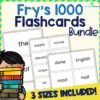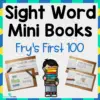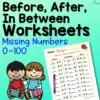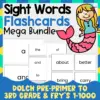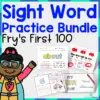Learning to sequence is beneficial for preschoolers because it helps them recognize patterns and understand how to follow instructions.
And using hands-on activities to teach sequencing makes learning more fun and engaging for preschoolers. It also hones other important skills like fine motor, creativity, listening, and communication.
Great Preschool Sequencing Activities
Here we gathered simple and fun sequencing activities that your preschooler will enjoy.
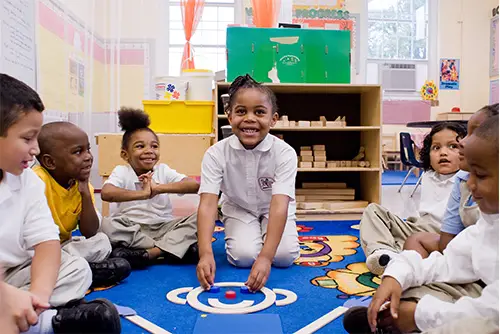
Preschoolers can start to learn sequencing with Mat Man.
This sequencing activity features manipulative body parts in various shapes that your child connects to create a person.
Each child gets a body part and, with the help of the Mat Man Song or a teacher, starts to build the man. Then, they take turns putting the pieces together until they create the Mat Man.
You must emphasize putting the puzzle together from head to feet to develop sequencing skills.
Have your child draw and color the body on paper for an extended engaging activity. This activity also teaches body awareness to preschoolers.
Children can also play this game as a puzzle and take turns putting shapes together to develop their problem-solving skills.
More details on the activity and Mat Man kit are available at lwtears.com.
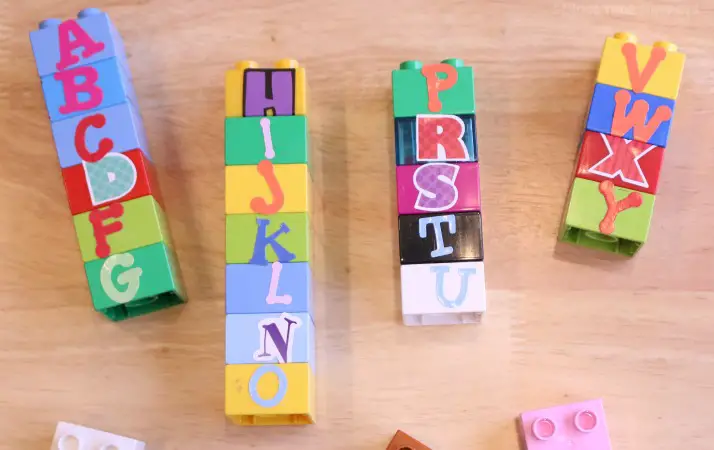
For this activity, gather your Legos and alphabet stickers for this easy-to-setup sequencing activity. Then, stick a letter to each block.
You can use these pieces to teach the sequence of letters with the alphabet song. Simply put all the blocks on the table and have your child put them back together in alphabetical order.
Children struggling with letter recognition can begin with a smaller stack. For example, letters A to E only.
For more confident preschoolers, you can also play “What’s the missing letter?” To prepare, stack five letters together, leaving out one letter from the sequence. Then, ask your child what is missing from the set.
If you don’t have letter stickers, you can use markers to write the letters. You can also make this game more exciting by combining uppercase and lowercase letters.
To find out more about this activity, be sure to check out schooltimesnippets.com.
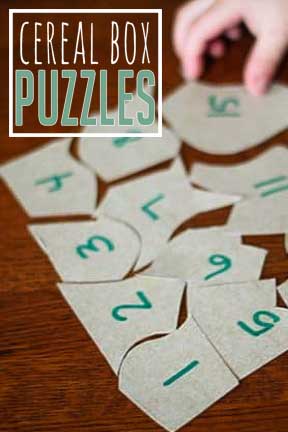
You can also teach sequencing to preschoolers using numbers.
In this activity, you only need some old cereal boxes, markers, and scissors. To create the puzzle, use the backside of the box and write the numbers. You can decide how many numbers your preschoolers can count or arrange. Then, simply cut up the box into rows and columns.
Ask your child to find number 1. Then, have them put the puzzle pieces together by counting their way to the last one.
This activity is perfect for preschoolers of varying skill levels, as you can design the puzzle to go as high or low as your child can do.
You may opt to cut in squares to make the game more challenging. But you can also make curves and zigzags to make this set a self-correcting puzzle.
For further details, have a look at handsonaswegrow.com
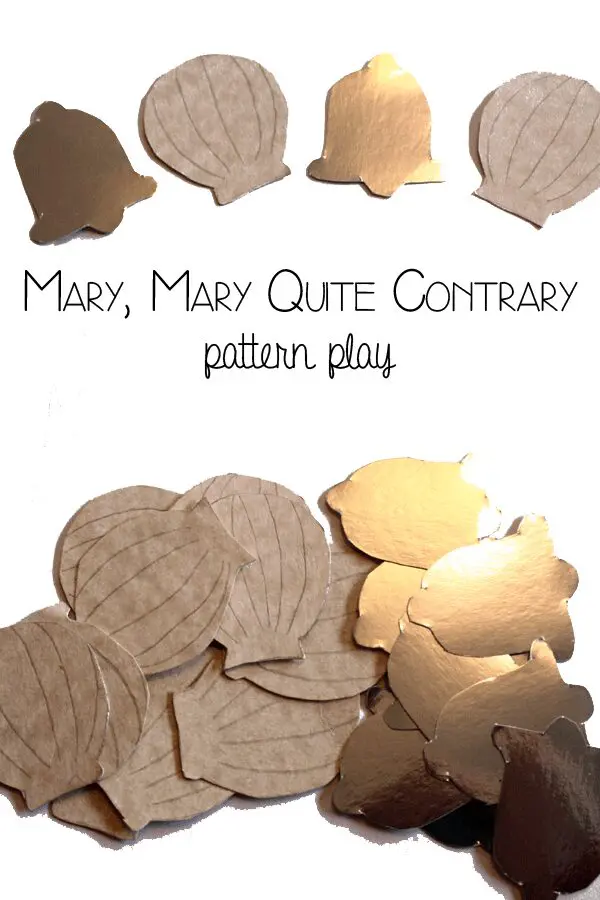
In this activity, your child learns to recognize and follow patterns using shapes.
Start by creating a sequence of shapes. Then, name these shapes with your child. In the end, ask what comes next. Finally, have them try to complete one set of the pattern independently.
You can DIY the materials or use objects around you.
For this craft, you’ll need the following:
- Cardboard to make a pattern
- Two different colored cards (one color for each pattern)
- Scissors for cutting
You can also use objects around you, like crayons or pencils. But make sure to model the pattern first so they can focus on the things and not the colors or sizes of the objects. Then, make the game more complicated by introducing more shapes or objects to the sequence.
This game will surely entertain them as you can make as many patterns as possible as you introduce more shapes or items to the set.
Be sure to check out more about this activity at RainyDayMum.co.uk.
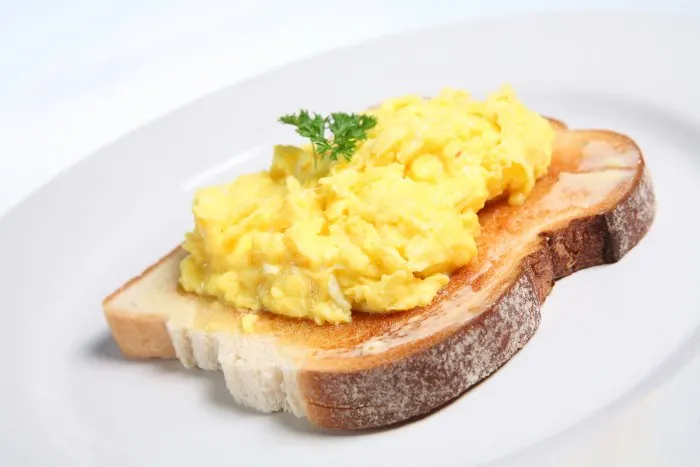
Another fun hands-on sequence activity for preschoolers is following a recipe. The only materials you need for this are the cooking ingredients and a recipe to follow.
An example of a simple recipe for children is preparing a peanut butter and jelly sandwich. Simply read the instructions out loud and have your child perform the activity as you say it.
You can also print the instructions and have your children check or cross out a step once they have finished them.
This is a great way to teach sequencing because you can easily keep your child engaged by having them prepare their favorite meal.
Following a recipe is also a great activity as it expands your child’s kitchen items and food vocabulary. And it develops their fine motor skills as they handle different cooking utensils. For more information and recipe ideas, visit empoweredparents.co.
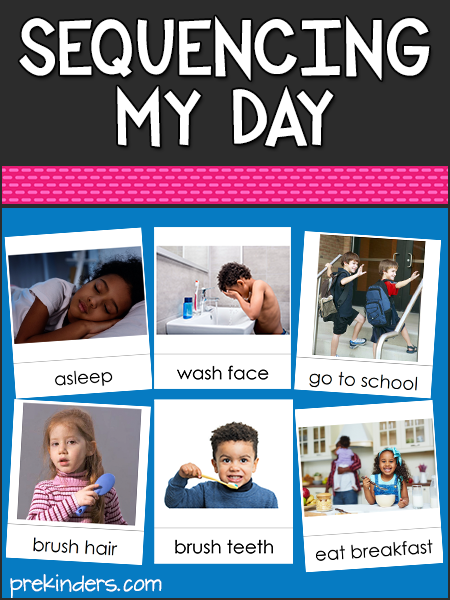
Let your child tell their day and learn sequencing with the Daily Routine Sequencing Cards.
This printable set shows illustrations of eight common daily activities, from waking up to going to sleep again. You can also remove some photos to adapt to your child’s daily routine.
Have your child arrange the activities, then encourage them to use the pictures to narrate their days with the class. This helps develop their speaking and social skills.
You can also give the cut-and-paste activity that comes with the printable and focus on three or four routines.
This free printable comes in black and white and colored variations. We recommend printing them on cardstock and laminating them to make the pieces more durable.
Download the free materials at PreKinders.com.
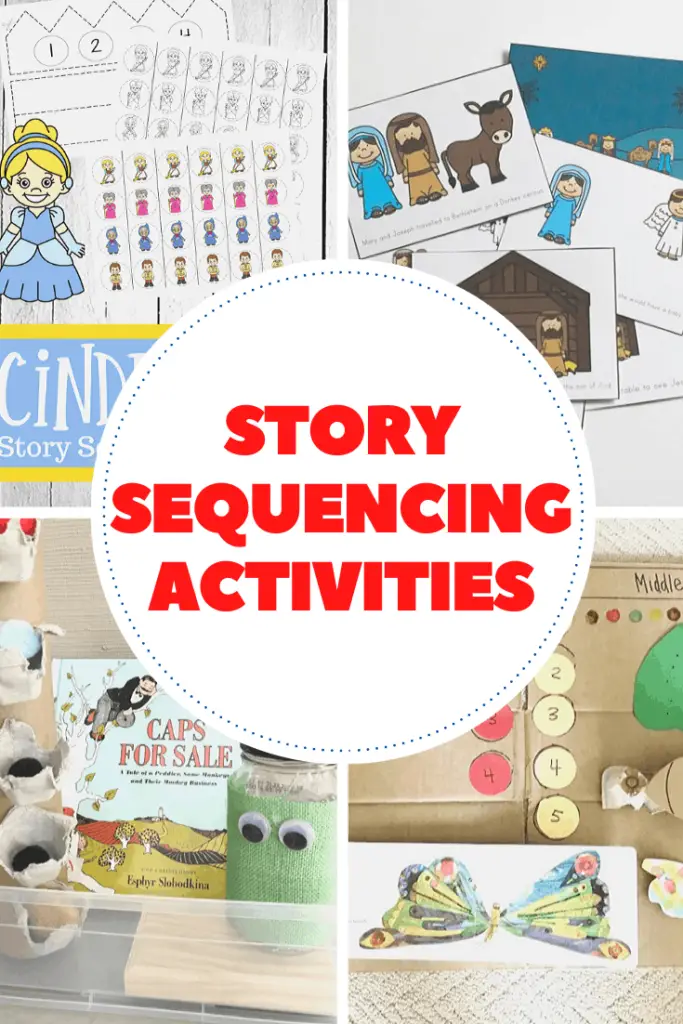
Make learning sequencing through stories more hands-on with story picture cards.
You can use timeless classic fairytales like “Three Little Pigs” and “The Very Hungry Caterpillar” or nursery rhymes like “Itsy Bitsy Spider.”
Our personal favorite from these free printables is the story “There Was An Old Lady Who Swallowed a Frog.” The story is so ridiculous and engaging that your child will surely enjoy listening to it! This story also has a very distinct sequence of activities, making it perfect for introducing this comprehension skill to preschoolers.
For the nursery rhyme selection, we encourage letting your child sing the rhyme as they put the picture puzzles together. It builds engagement and makes the task easier for struggling learners.
For more details and story sequencing printable, check out: HomeschoolPreschool.net.
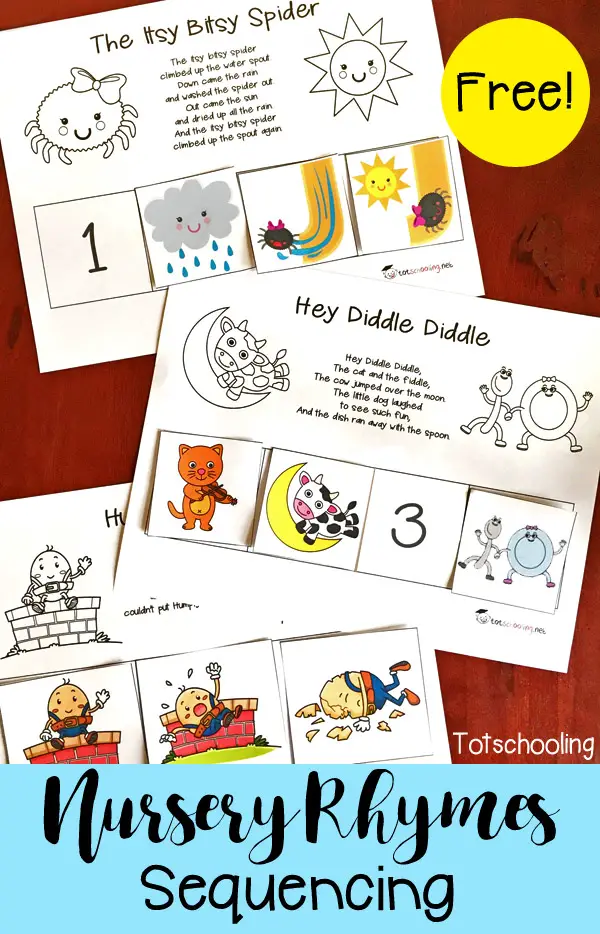
Nursery rhymes help develop your child’s communication skills and creative expression. They are also great for teaching sequencing because they are short, and children are familiar with them.
This printable set has seven rhymes, including “Humpty, Dumpty,” and “Jack and Jill.” The materials do not need special preparation to use. You only need the printed activities and some scissors.
Have your children sing along to the nursery rhymes or listen to the song as they arrange the sequence.
You can cut the pictures before class or have your preschoolers hone their fine motor skills and cut the sequences themselves.
We recommend picking the three-sequence puzzles for your preschoolers for modeling and dependent practice. And the four-sequence puzzles for more confident children.
Get more information about these printables at totschooling.net.
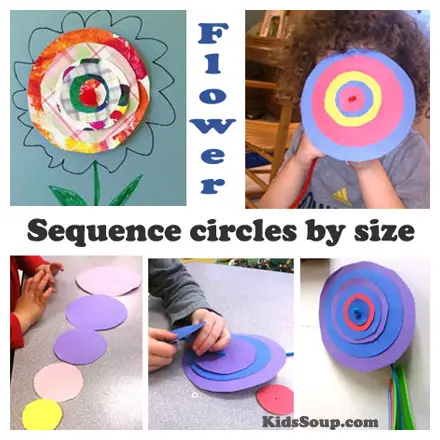
Use circles to create flowers with this simple sequencing activity.
For the circle sequencing activity, you will need the following:
- Colored papers
- Circle templates
- Scissors
- Pipe cleaners
If you don’t have circle templates, you can have your children trace circles from different objects around you. Only make sure that these circles have size variation. Alternatively, you can let the preschoolers freehand the circles to develop their fine motor skills.
After prepping, ask the children to push the pipe cleaner in the middle of the biggest circle. Then, repeat the instruction and have them put the next biggest circle on the pipe cleaner. Continue until they have threaded all the circles in size order.
For variation, you can also experiment with different types of shapes to also familiarize your children with them. And to turn this into a fun art activity, have them draw patterns on the circles before turning them into flowers.
Learn more about this activity at kidssoup.com.
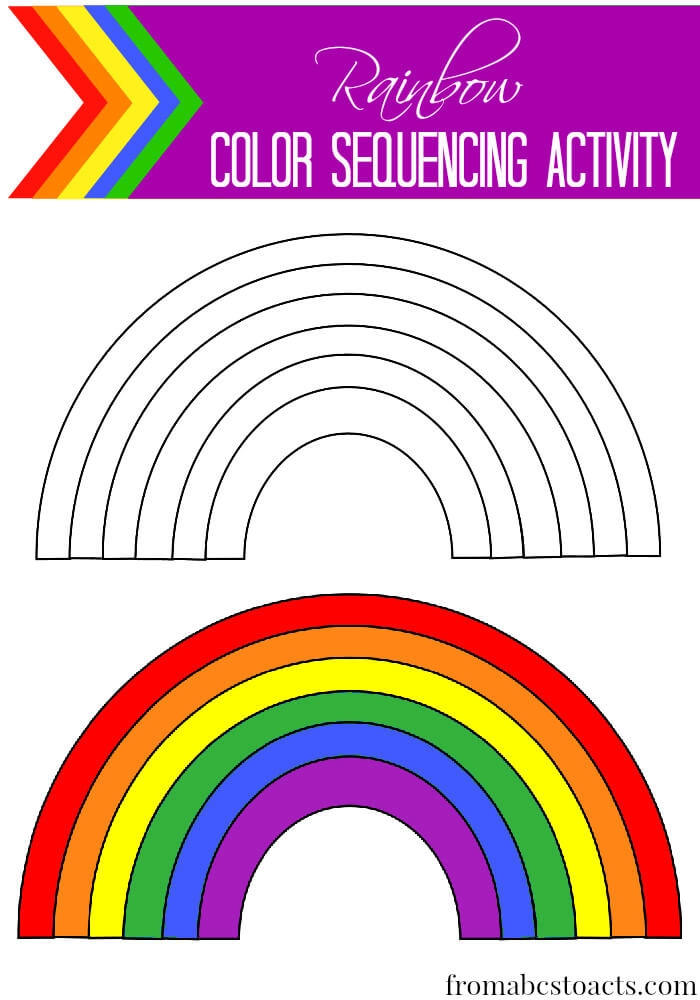
This is a fun sequencing activity using the seven colors of the rainbow.
Preparing for this project isn’t hard. You can print rainbows and have your children use crayons to fill in the rainbow. Or you can use the printable sheet. For this option, you will also need the following:
- Glue
- Scissors
You can cut the strips before class or have your child practice cutting independently.
Play the rainbow song and have them sing along as they arrange the colors on the rainbow.
You can also use other colors besides the rainbow colors and have the children arrange them from darkest to lightest or vice versa.
Alternatively, you can use other objects that match the rainbow colors for further rainbow sequencing activities.
Get your printable and more information about this activity at FromABCstoACTs.com.
Conclusion
It is important to start teaching sequencing as early as preschool because it paves the way to developing later skills like planning and problem-solving. These are necessary skills that help your child grow independent and smart in life. And with these activities, you make learning this comprehension skill more engaging and fun for younger children.
We hope you found lots of great sequencing options on our list. Thanks for reading! See you again soon.


